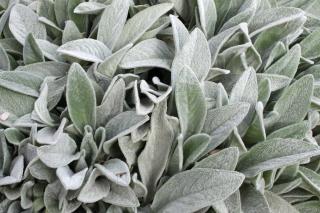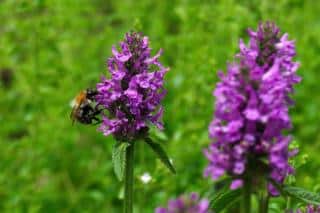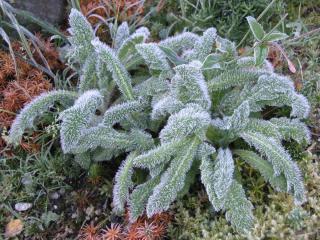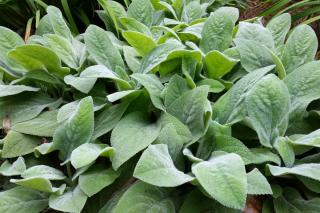

Stachys, or “lamb’s ear“, has soft, fuzzy silver-green leaves – shaped like lamb’s ears!
Key facts to remember
Name – Stachys lanata or byzantina
Family – Lamiaceae
Type – Perennial
Height – 12 to 24 inches when blooming (30 to 60 cm)
Exposure: full sun – Soil: light, well-drained – Flowering: late spring → mid-fall
 You can plant lamb’s ear in Spring or in Fall, it isn’t really important. In mild areas, you can even plant from October to May-June. Keep a distance of 10 to 12 inches (25 to 30 cm) between plants.
You can plant lamb’s ear in Spring or in Fall, it isn’t really important. In mild areas, you can even plant from October to May-June. Keep a distance of 10 to 12 inches (25 to 30 cm) between plants.
 You can propagate your Stachys in spring or fall through crown division by separating offshoots.
You can propagate your Stachys in spring or fall through crown division by separating offshoots.
Preparing cuttings is very easy in Spring.
Also, sowing is very successful at the beginning of summer. Use seed collected the year before from dried flowers.
Lamb’s ear can take full sun, but it hates excess water.
From Spring to Winter, it’s very easy to care for Stachys. It can hold up to deep colds (-2°F or -19°C), and it doesn’t fear drought: this plant shouldn’t give you any problems at all. To extend the blooming and favor lush foliage, here are a few tips that can help:
 In winter, as soon as you see that leaves are beginning to wilt, cut them off and lay them around as mulch.
In winter, as soon as you see that leaves are beginning to wilt, cut them off and lay them around as mulch.
This happens when it’s both cold and very wet.
New shoots will sprout again in spring.
 This plant is also known under the name “woolly hedgenettle”, thanks to the fuzz that’s on its leaves: it looks like wool! The shape of the leaves also led the plant to earn a few more names as well: rabbit’s ears and bear’s ears to name a few. Leaves are rather long and covered with a thin layer of soft bristles. A typical herbaceous plant, it stands out due to its whitish gray color. The flowers, which can be either pink or purple, climb to nearly 2 feet (60 cm).
This plant is also known under the name “woolly hedgenettle”, thanks to the fuzz that’s on its leaves: it looks like wool! The shape of the leaves also led the plant to earn a few more names as well: rabbit’s ears and bear’s ears to name a few. Leaves are rather long and covered with a thin layer of soft bristles. A typical herbaceous plant, it stands out due to its whitish gray color. The flowers, which can be either pink or purple, climb to nearly 2 feet (60 cm).
Another species is Stachys grandiflora. Like the other lamb’s ear plants, it’s very well adapted to hot and dry climates. You can use this plant to form an elegant sheet of ground cover.
Include these unique gray-colored plants in your colorful flower beds!